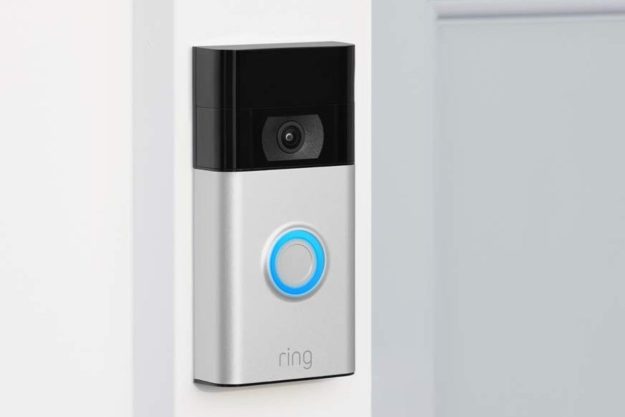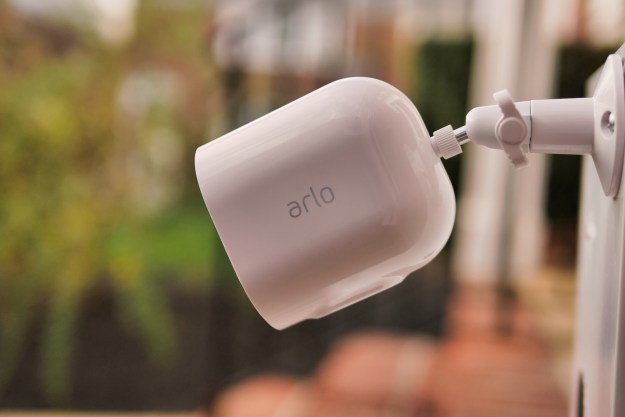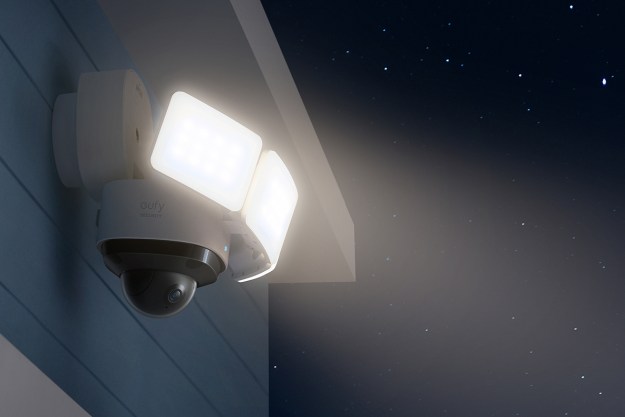Doorbell video cameras are one of the easiest and most basic security devices you can install in your home. Your front door is the epicenter of comings and goings surrounding your house. With a good doorbell camera, you can track visitors, keep an eye on your front yard, and even watch the street in front of your house for that Amazon delivery that’s only six stops away! Speaking of which, a doorbell camera is a great way to protect your packages from porch bandits.
So it’s important to pick the right doorbell for you. In this case, we’re focusing on the best doorbells that can keep package pirates at bay. We looked at a wide field of contenders that slot into all budgets and we have some good options for you here. Just like our outdoor camera, indoor camera, and home security scorecards, we’ve got all the info you need to make a great choice for your home.

What we are looking for
When it comes to doorbell cameras, we really wanted to focus on what your front door is used for — greeting visitors and packages. We put emphasis on the latter for two reasons. First, people get a lot of packages. There’s a reason why Jeff Bezos makes insane amounts of money and why Amazon is looking into moving into shopping malls. Second, with the rise of package deliveries, so too has come a rise in package theft. Since we can’t all over-engineer glitter bombs as theft deterrents, we rely on more conventional means — cameras. So for this scorecard, we broke it down into a few very important categories.
The basics
We consider things like night vision and two-way talk vital for a doorbell camera, they’re the minimum expectations. For the purposes of package protection, the specifics aren’t really key. But they need to be there in order to meet our bare-minimum standards. Some implementations of these are better than others, but they’ll all get the job done
Field of view
Obviously, if your camera can’t see the package, or the thief, it’s not going to do a great job. Most of the doorbell cameras we tested have very wide fields of view. That means, if it’s on your porch, it is seen. That’s really important because you never know where that package is going to get placed, so wider is better.
Some manufacturers differentiate their fields of view into both horizontal and vertical. As the names imply, horizontal is the field of view from left to right, while vertical goes from top to bottom. They’re both important. If you don’t have 180 degrees on the vertical, a package placed on your doormat might escape notice, but if the horizontal field of view is too narrow, you might miss a perpetrator from the side.
Detection Zones
As important as it is to know when a person is at your door, it’s also important to rule out as many false positives as possible. A detection zone allows you to designate sections of the camera that the software will ignore. You don’t want your phone chirping every time someone is out walking their dog or when a car drives by. Segmenting off your porch and the immediate area in front of the porch will help you eliminate unnecessary notifications, and makes your doorbell that much more reliable.
Package detection
If a doorbell is going to help protect your packages, it should be able to let you know a package is there. Package detection is quite tricky and requires artificial intelligence (A.I.) built into the doorbell in order to work effectively. Not all of the doorbells have A.I. that can do that. We still included them on the list because they do detect motion, and delivery people need to move in front of your doorbell in order to deliver.
But package detection did bump some doorbells above others. While all the doorbells can let you know when something’s going on in front of your door, the ones that can advise you of packages scored higher in our ranking. This is what helps you, the homeowner, narrow down the notifications that are most important to you.
Person detection
Person detection requires A.I. to figure out the difference between “motion” and “a person.” When we spoke with Vivint’s CTO about this, he told us the easiest way to detect motion is by examining pixels in a frame. If a bunch of those pixels change in a group — voila! Motion! But the ability to determine what is just motion and what is an actual person is much more difficult, which is where A.I. comes into play.
Package detection is obviously the most desirable here, but person detection is another, broader category that also pertains to packages. Maybe a doorbell can’t tell if a package is left at your door, but if its A.I. that can differentiate between a person and a cat running across your porch, you’ll still be able to filter out notifications that you don’t necessarily need. This makes your doorbell that much more useful.
Camera Resolution
Finally, we have camera resolution and that is exactly what it sounds like. Just like DSLRs and cameras in your phone, doorbell cameras have sensors and a maximum resolution. We set our minimum bar at 1080p, though some doorbells go above that. Camera resolution is particularly critical for picking up key details in a frame that might allow you to identify if a package has been left, or in the worst case what kind of shoes the person who stole your package was wearing.

How things shaped up
In the world of package protectors, we have two standout entries — the Arlo Video Doorbell and the Vivint Doorbell Camera Pro. Both of these entries have 180-degree fields of view both in the horizontal and vertical. Plus, they both have package detection. These two are both no-brainers. We have to give the overall nod to the Arlo Video Doorbell because while Vivint will actively protect your packages with its SmartSentry technology, it’s $100 more and requires a full Vivint security system to be installed along with it. Arlo can stand on its own.
The rest of the field has some popular and well-known names, including the newcomer EZVIZ DB1, the two big-name pros Ring Video Doorbell 3 and Nest Hello Video Doorbell, and great entries like the Blue by ADT Doorbell Camera and the Eufy Security Video Doorbell 2K. Pricing for this category starts at just around $90 and goes up to as much as $249, which means there’s a doorbell for every budget.

We would be remiss if we didn’t mention that the Nest Hello doorbell also has package detection, but its higher price tag and narrower field of view took it down a notch. 160-degrees is not small, but it’s not 180 degrees. We especially like the smart display integration you get with Nest Hello if you have a Google-assistant powered smart display like the Google Nest Hub.
On the Echo side of things, the Arlo Video doorbell and Ring Video Doorbell 3 can both display their camera feeds on an Echo Show. The Vivint Doorbell shows up on the Vivint Security panel. All the rest are confined to their respective apps.
Which one should you buy?
The Arlo Video Doorbell and the Vivint Doorbell Camera Pro are standout leaders because they check all the boxes we were looking for. Video doorbells are like a lot of other smart home gear though, because often the ecosystem you have adopted will dictate what you should buy. Notably, if you have a Vivint security system, the Vivint Doorbell Camera Pro is the way to go. If you’re a Google person, the Nest Hello is worth the extra dollars because of its package detection and smart display integration. If you have Echo Shows around the house, Arlo or Ring would be a good way to go.
The rest of the doorbells are rather platform agnostic. They don’t have integrations with smart assistants, which is also fine. The app does a great job with notifications and two-way communication. It’s a great way to make sure you don’t lock into a certain ecosystem.
If you are looking for a budget-friendly doorbell camera, the EZVIZ DB1 is the way to go. For less than $90 you get a video doorbell with an admittedly narrow 105-degree field of view on the horizontal, but you do get 180 degrees on the vertical, so you can still see packages right up to your front door. What you’re missing out on are smarter features like person or package detection. You get a very basic motion detection and that’s it.
Want more news, reviews, guides, and features from Digital Trends? Follow us on Apple News, Google News, and Flipboard.
More on security cameras
- Indoor security cameras that emphasize privacy
- Strategic places to position your security camera
- How to tell if your camera is hacked
- Why do hackers want to hack cameras?
Editors' Recommendations
- The Ring Battery Doorbell Pro offers premium features without the need for cumbersome wires
- New Wyze Video Doorbell v2 offers microSD card slot, 2K resolution for just $40
- Ecobee takes on Ring, Arlo with its first smart doorbell camera
- Why moving your smart home could be a nightmare
- Ring Battery Doorbell Plus offers improved battery life and new aspect ratio




